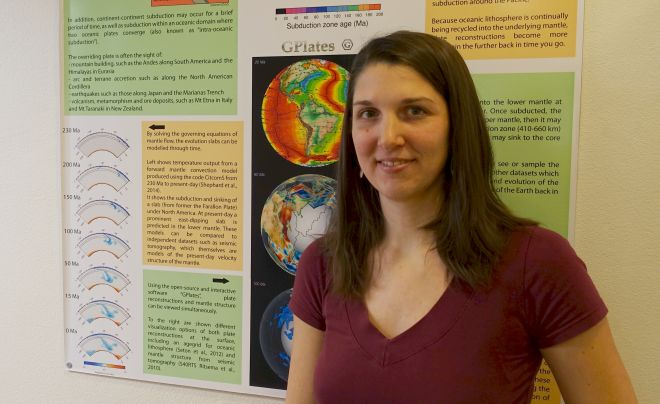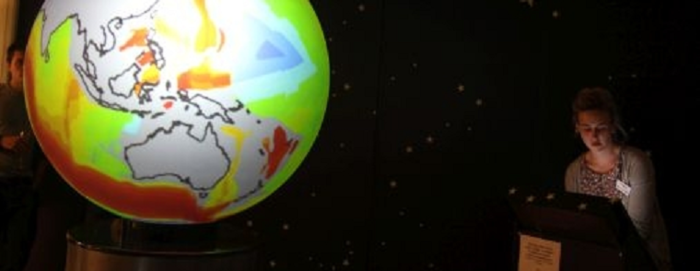Differences in heat loss on Earth may have an impact on how the tectonic plates are moving, according to a new study.
Research news/ In media - Page 2
Polene byttet plass midlertidig og jordens magnetfelt brøt sammen. Dette kan ha hatt større konsekvenser enn man har tidligere antatt, ifølge en ny studie fra forskere i Australia. Studien er omtalt i forskning.no, og har med intervjukommentarer fra Trond Helge Torsvik.
Congratulations to three recent Marie Skłodowska-Curie Actions Fellowship awardees and their projects! CEED has two incoming Fellows (TANGO - Leandro Gallo; ICECAP Madeleine Vickers) and one outgoing fellow (BOULDERING - Nils Prieur).
Hvilket av disse Mars-bildene sier mest om hvordan planeten ser ut? Forskere oppfordres til å bli mer bevisste når de fargelegger figurer og bruker fargeskalaer.
Researcher and geologist Grace Shephard from CEED and Department of Geosciences, University of Oslo has been selected to be the Norwegian representative in the Marine Working Group in the International Arctic Science Committee, IASC.
Else-Ragnhild Neumann Award for Women in Geosciences is awarded for the 3rd time, and this year it goes to Dr Ágnes Király, CEED, UiO. The award is given to a PhD or Postdoctoral Fellow who has given a significant contribution to research in geosciences.
The ESA mission - Ariel - has proceeded to the next phase. This is very exciting news for planetology and the space industry. Read more over on the CEED Blog
https://www.mn.uio.no/ceed/english/about/blog/2020/esa-formally-adopts-ariel.html
There is a new mineral in town - donwilhelmsite - found on the Moon and in small quantities in the mid-mantle (Fritz et al., 2020).
Read more on the CEED Blog
Out this week, a new study published in Nature Communications by Bellwald et al. (2020) and including CEED Adjunct Professor Sverre Planke.
Each summer CEEDlings submit a photo for the annual #PostcardsfromCEED which are posted on social media. Below is a compilation of the 2020 edition.
Ein ny forskingsartikkel av forskarar frå Institutt frå geofag og Museum für Naturkunde, Berlin m.fl. publisert i Nature Geoscience, kastar ljos over kva som kan ha skjedd ved den største av dei fem kjente masseutryddingane på jorda. Henrik Svensen er intervjua om denne studien i forskning.no.
A new study led by Dr. Martin Schobben (Museum für Naturkunde, Berlin), with co-authors from the Dept. for Geosciences (UiO), describes the causal chains between environmental changes and mass extinction at the Permian-Triassic boundary about 252 million years ago. From this study, scientists can get a glimpse of what might happen to biodiversity under the predicted global warming in the near future. New publication in Nature Geoscience.
Viste du at Oslo er viden kjent for sin varierte geologiske fortid? Her finn ein spor etter massive fjellkjeder, vulkanar, istid og annen dramatikk. Henrik H Svensen er aktuell med ei ny bok om den spanande forhistoria til landskapet rundt hovudstaden.
DEEP is recommended for continued funding as a national research school and will run until 15 August 2024.
Femten universiteter og høyskoler får penger til å opprette utdanningstilbud som er tilgjengelige også utenfor campus. Det skal gjøre det enklere for flere å få kompetansepåfyll uavhengig av arbeidssituasjon og bosted.




















